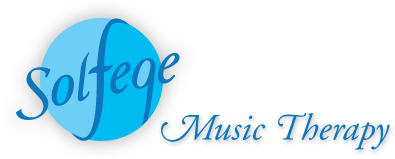News
• A baby’s cry pitched down →
What is music therapy — or what it is not!
Music therapy is not music teaching, although planned goals in music therapy can at times induce the acquisition of musical skills – (these are not desired outcomes but rather a positive by-product). The following fictitious vignette illustrates a scenario similar to that which is oftentimes encountered in music therapy and seeks to illustrate the difference between music teaching and music therapy.
I am lending a supportive rhythm and chordal background to my client’s non-verbal vocalisations. Tim is ‘singing’ the seemingly non-sensical words of a song he is creating, and I am trying to match his pitch with my guitar chords. I am also trying to sense the level of intensity and pace of his song, so that I can musically re-enforce and support the emotion he is expressing. I echo his vocalizations back to him at opportune moments, and repeat some of the structures he has created, in order to solidify a kind of chorus. Tim is looking increasingly excitedly at me, especially when I echo his ‘chorus’ – he is intensely and enthusiastically engaged, making solid eye contact with me. Tim is clearly enjoying in the moment.
If the above was an example of music education, the assessment of what just happened could go along the lines of: ‘Tim is not staying within his pitch and his melody is moving randomly all over the place – it needs more structure and coherence. He is unable to maintain a solid pace and rhythm, and is not following the strumming of the guitar totally. Tim is not establishing and securing the themes of his song, and appears exited and somewhat distracted by his phrases being repeated by the music teacher. He needs to develop more structure to his singing and become more coherent in tempo and pitch, so that he can create meaningful music – Must try harder’.
In music therapy assessment what is happening here is: In his own free improvisational style Tim is communicating and expressing of himself, albeit non-verbally. The music is inspiring and encouraging Tim to verbalize and express vocally and melodiously something of his world and of himself. He is communicating and connecting with another person via the music making. He is making eye contact with someone other than his parents, and he is demonstrating clear enthusiasm, safety and enjoyment partaking in the musical activity. Tim is being creative, not in the usual aesthetically pleasing sense, but he is creating his own song which has meaning for him. Tim is clearly feeling supported and heard. His family reports that he is always less anxious and much calmer after his music therapy session, making it much easier to care for him.
Tim is on the Autism Spectrum. He does not speak and has serious impairments in his ability to communicate with and understand others, and as a result his social functioning is severely affected. He feels safe with very few people, and does not make eye contact with anyone except for his immediate family. Due to the isolation of his closed world he often experiences frustration. Musical interaction, such as this improvisational collaboration, is a process whereby he can express of himself to others in a non-verbal, yet efficacious and meaningful way.
In music education, the desired goals are musical, whereas in music therapy the goals are non-musical – in this illustration the goals being: Psychosocial well-being, socialisation and anxiety reduction.
Music therapy is provided by highly trained and qualified practitioners, who use clinical and evidence-based music interventions. Music therapist’s professional practice is overseen by a governing body — in Australia ‘The Australian Music Therapy Association – AMTA’.

Leave a Reply